 W
WWalter Lewis Baily, Jr. was an American mathematician.
 W
WElwyn Ralph Berlekamp was a professor of mathematics and computer science at the University of California, Berkeley. Berlekamp was widely known for his work in computer science, coding theory and combinatorial game theory.
 W
WJames Daniel "BJ" Bjorken is an American theoretical physicist. He was a Putnam Fellow in 1954, received a BS in physics from MIT in 1956, and obtained his PhD from Stanford University in 1959. He was a visiting scholar at the Institute for Advanced Study in the fall of 1962. Bjorken is Emeritus Professor in the SLAC Theory Group at the Stanford Linear Accelerator Center, and was a member of the Theory Department of the Fermi National Accelerator Laboratory (1979–1989).
 W
WAndreas Raphael Blass is a mathematician, currently a professor at the University of Michigan. He works in mathematical logic, particularly set theory, and theoretical computer science.
 W
WEugenio Calabi is an Italian-born American mathematician and the Thomas A. Scott Professor of Mathematics, Emeritus, at the University of Pennsylvania, specializing in differential geometry, partial differential equations and their applications.
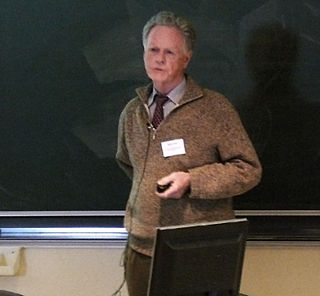 W
WArthur Pentland Dempster is a Professor Emeritus in the Harvard University Department of Statistics. He was one of four faculty when the department was founded in 1957.
 W
WIoana Dumitriu is a Romanian-American mathematician who works as a professor of mathematics at the University of California, San Diego. Her research interests include the theory of random matrices, numerical analysis, scientific computing, and game theory.
 W
WNoam David Elkies is an American mathematician and professor of mathematics at Harvard University. At the age of 26, he became the youngest professor to receive tenure at Harvard. He is also a chess national master and a chess composer.
 W
WRichard Phillips Feynman was an American theoretical physicist, known for his work in the path integral formulation of quantum mechanics, the theory of quantum electrodynamics, the physics of the superfluidity of supercooled liquid helium, as well as his work in particle physics for which he proposed the parton model. For contributions to the development of quantum electrodynamics, Feynman received the Nobel Prize in Physics in 1965 jointly with Julian Schwinger and Shin'ichirō Tomonaga.
 W
WDonald Alexander Stuart Fraser was a Canadian statistician, and Professor Emeritus at the University of Toronto. In 2012 he was appointed an Officer of the Order of Canada for his influence in the advancement of the statistical sciences in Canada. In 1961 he was elected as a Fellow of the American Statistical Association. In 1985, he was awarded the first Gold Medal of the Statistical Society of Canada. In 2014 he was chosen as a fellow of the American Mathematical Society "for contributions to the theory and foundations of statistics, as well as for leadership and influence on the advancement of the statistical sciences."
 W
WAndrew Mattei Gleason (1921–2008) was an American mathematician who made fundamental contributions to widely varied areas of mathematics, including the solution of Hilbert's fifth problem, and was a leader in reform and innovation in mathematics teaching at all levels. Gleason's theorem in quantum logic and the Greenwood–Gleason graph, an important example in Ramsey theory, are named for him.
 W
WMelvin Hochster is an American mathematician working in commutative algebra. He is currently the Jack E. McLaughlin Distinguished University Professor of Mathematics at the University of Michigan.
 W
WRoger Evans Howe is the William R. Kenan, Jr. Professor Emeritus of Mathematics at Yale University, and Curtis D. Robert Endowed Chair in Mathematics Education at Texas A&M University. He is known for his contributions to representation theory, in particular for the notion of a reductive dual pair and the Howe correspondence, and his contributions to mathematics education.
 W
WDaniel Mertz Kane is an American mathematician. He is currently an associate professor with a joint position in the Mathematics Department and the Computer Science and Engineering Department at the University of California, San Diego.
 W
WIrving Kaplansky was a mathematician, college professor, author, and musician.
 W
WMichael Jeffrey Larsen is an American mathematician, a distinguished professor of mathematics at Indiana University Bloomington.
 W
WGeorge Whitelaw Mackey was an American mathematician known for his contributions to quantum logic, representation theory, and noncommutative geometry.
 W
WRobert Laurence Mills was an American physicist, specializing in quantum field theory, the theory of alloys, and many-body theory. While sharing an office at Brookhaven National Laboratory, Yang Chen-Ning and Robert Mills formulated in 1954 a theory now known as the Yang–Mills theory – "the foundation for current understanding of how subatomic particles interact, a contribution which has restructured modern physics and mathematics."
 W
WJohn Willard Milnor is an American mathematician known for his work in differential topology, K-theory and dynamical systems. Milnor is a distinguished professor at Stony Brook University and one of the five mathematicians to have won the Fields Medal, the Wolf Prize, and the Abel Prize
 W
WPeter Lawrence Montgomery was an American mathematician who worked at the System Development Corporation and Microsoft Research. He is best known for his contributions to computational number theory and mathematical aspects of cryptography, including the Montgomery multiplication method for arithmetic in finite fields, the use of Montgomery curves in applications of elliptic curves to integer factorization and other problems, and the Montgomery ladder, which is used to protect against side-channel attacks in elliptic curve cryptography.
 W
WDavid Bryant Mumford is an American mathematician known for distinguished work in algebraic geometry, and then for research into vision and pattern theory. He won the Fields Medal and was a MacArthur Fellow. In 2010 he was awarded the National Medal of Science. He is currently a University Professor Emeritus in the Division of Applied Mathematics at Brown University.
 W
WWilliam Aaron Nierenberg was an American physicist who worked on the Manhattan Project and was director of the Scripps Institution of Oceanography from 1965 through 1986. He was a co-founder of the George C. Marshall Institute in 1984.
 W
WAaron C. Pixton is an American mathematician at the University of Michigan. He works in enumerative geometry, and is also known for his chess playing, where he is a FIDE Master.
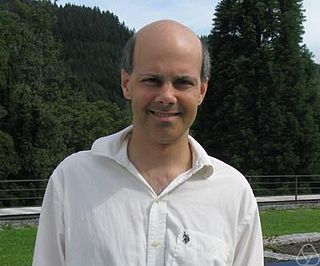 W
WBjorn Mikhail Poonen is a mathematician, four-time Putnam Competition winner, and a Distinguished Professor in Science in the Department of Mathematics at the Massachusetts Institute of Technology. His research is primarily in arithmetic geometry, but he has occasionally published in other subjects such as probability and computer science. He has edited two books, and his research articles have been cited by approximately 1,000 distinct authors. He is the founding managing editor of the journal Algebra & Number Theory, and serves also on the editorial boards of Involve and the A K Peters Research Notes in Mathematics book series.
 W
WMiller Smith Puckette is the associate director of the Center for Research in Computing and the Arts as well as a professor of music at the University of California, San Diego, where he has been since 1994. Puckette is known for authoring Max, a graphical development environment for music and multimedia synthesis, which he developed while working at IRCAM in the late 1980s. He is also the author of Pure Data (Pd), a real-time performing platform for audio, video and graphical programming language for the creation of interactive computer music and multimedia works, written in the 1990s with input from many others in the computer music and free software communities.
 W
WArthur Leonard Rubin is an American mathematician and aerospace engineer. He was named a Putnam Fellow on four consecutive occasions from 1970 to 1973.
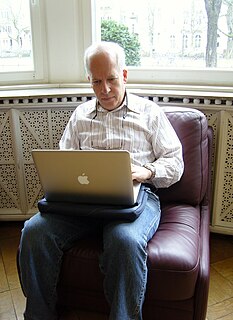 W
WKarl Cooper Rubin is an American mathematician at University of California, Irvine as Thorp Professor of Mathematics. Between 1997 and 2006, he was a professor at Stanford, and before that worked at Ohio State University between 1987 and 1999. His research interest is in elliptic curves. He was the first mathematician (1986) to show that some elliptic curves over the rationals have finite Tate–Shafarevich groups. It is widely believed that these groups are always finite.
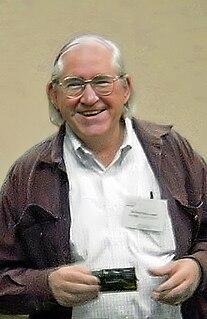 W
WRichard C. Schroeppel is an American mathematician born in Illinois. His research has included magic squares, elliptic curves, and cryptography. In 1964, Schroeppel won first place in the United States among over 225,000 high school students in the Annual High School Mathematics Examination, a contest sponsored by the Mathematical Association of America and the Society of Actuaries. In both 1966 and 1967, Schroeppel scored among the top 5 in the U.S. in the William Lowell Putnam Mathematical Competition. In 1973 he discovered that there are 275,305,224 normal magic squares of order 5. In 1998–1999 he designed the Hasty Pudding Cipher which was a candidate for the Advanced Encryption Standard, and he is one of the designers of the SANDstorm hash, a submission to the NIST SHA-3 competition.
 W
WPeter Williston Shor is an American professor of applied mathematics at MIT. He is known for his work on quantum computation, in particular for devising Shor's algorithm, a quantum algorithm for factoring exponentially faster than the best currently-known algorithm running on a classical computer.
 W
WBarry Martin Simon is an American mathematical physicist and the IBM Professor of Mathematics and Theoretical Physics at Caltech, known for his prolific contributions in spectral theory, functional analysis, and nonrelativistic quantum mechanics, including the connections to atomic and molecular physics. He has authored more than 400 publications on mathematics and physics.
 W
WRavi D. Vakil is a Canadian-American mathematician working in algebraic geometry.
 W
WPaul Alan Vojta is an American mathematician, known for his work in number theory on Diophantine geometry and Diophantine approximation.
 W
WKenneth Geddes "Ken" Wilson was an American theoretical physicist and a pioneer in leveraging computers for studying particle physics. He was awarded the 1982 Nobel Prize in Physics for his work on phase transitions—illuminating the subtle essence of phenomena like melting ice and emerging magnetism. It was embodied in his fundamental work on the renormalization group.
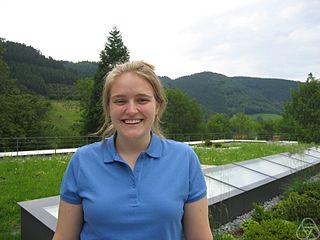 W
WMelanie Matchett Wood is an American mathematician at Harvard University who was the first woman to qualify for the U.S. International Mathematical Olympiad Team. She completed her Ph.D. in 2009 at Princeton University and is currently Professor of Mathematics at Harvard University, after being Chancellor's Professor of Mathematics at UC Berkeley and Vilas Distinguished Achievement Professor of Mathematics at the University of Wisconsin, and spending 2 years as Szegö Assistant Professor at Stanford University. She is a number theorist; more specifically, her research centers on arithmetic statistics, with excursions into related questions in arithmetic geometry and probability theory.
 W
WDon Bernard Zagier is an American-German mathematician whose main area of work is number theory. He is currently one of the directors of the Max Planck Institute for Mathematics in Bonn, Germany. He was a professor at the Collège de France in Paris, France from 2006 to 2014. Since October 2014, he is also a Distinguished Staff Associate at ICTP.